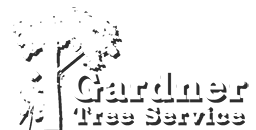If you’ve spent any time under a canopy of live oaks in South Louisiana, you’ve probably noticed the draping strands of Spanish moss swaying gently in the breeze. It’s as Southern as gumbo, jazz, and front porches in August. But behind the picturesque look lies a question that many homeowners eventually ask: Is Spanish moss bad for my trees?
Let’s cut through the folklore and get down to facts.
What Exactly Is Spanish Moss?
Despite its name, Spanish moss isn’t actually moss—and it’s not from Spain either. It’s a bromeliad, which makes it a cousin to the pineapple (no, seriously). It’s an epiphyte, meaning it doesn’t root in soil or draw nutrients from the tree it grows on. Instead, it absorbs moisture and nutrients from the air and rain.
So, if it’s not feeding off your tree… what’s the problem?
The Good News First: Spanish Moss Isn’t a Parasite
This is a common misconception. Spanish moss doesn’t suck nutrients from the tree. It doesn’t burrow into the bark. And it doesn’t spread disease. In fact, in small to moderate amounts, it’s generally harmless and can even be beneficial—offering shelter to birds and bugs, and helping maintain biodiversity in the ecosystem.
The Not-So-Good News: It Can Become a Problem
Here’s where things get tricky.
While Spanish moss isn’t parasitic, it can block sunlight and hold moisture against branches if it grows too thick. Over time, this can reduce the tree’s photosynthesis and encourage rot or fungal growth. In extreme cases, large clumps can become heavy enough to break limbs, especially after rain when the moss soaks up water like a sponge.
If your tree is already stressed—by disease, pests, drought, or age—Spanish moss can push it further into decline. So while it may not be the cause of a tree’s problems, it can certainly contribute.
How to Tell If It’s Time to Take Action
Here are some signs that your tree might be suffering from a moss overload:
-
Dense patches of moss are blocking most sunlight from getting to the leaves.
-
You notice dead or dying branches beneath heavy moss growth.
-
Moss is covering younger or thinner branches that can’t support much weight.
-
You’re starting to see signs of rot or fungal growth in shaded areas.
Managing Spanish Moss: What You Can (and Shouldn’t) Do
If you’ve determined your tree is being smothered, here’s what to do:
-
Manual Removal – The most common method is simply pulling the moss off by hand or with a telescoping tool. Be careful not to damage the bark.
-
Professional Pruning – For tall or mature trees, it’s best to call in a professional arborist. We’re used to dealing with ladders, safety harnesses, and tangled moss in hard-to-reach places.
-
Don’t Spray Herbicides – Some folks try copper-based sprays, but these can harm the tree more than help. Plus, they’re not very effective at removing moss.
Final Verdict: Friend or Foe?
Spanish moss is one of the defining visual elements of Southern landscapes. In moderation, it’s harmless—beautiful even. But if it gets out of control, it can become a burden on your tree’s health.
If you’re not sure whether it’s time to intervene, reach out to a certified arborist for an inspection. A trained eye can spot the early signs of trouble and help you strike the perfect balance between natural beauty and tree health.


